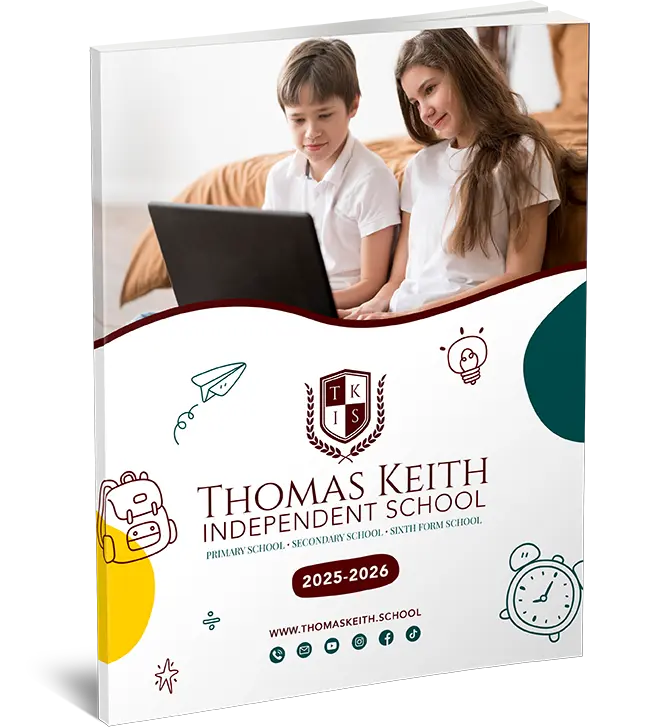
English Curriculum Year 1
English Curriculum Year 1
An All-Inclusive Guide for Parents and Teachers
Children who develop a lifetime passion for studying must first grasp the early stages of their educational path. Normally between the ages of 5 and 7, the English curriculum for Key Stage 1 (KS1) in the UK provides a structured yet flexible approach to enable children, normally acquire the foundations of literacy. This resource looks at the objectives, instructional strategies, and key components of the KS1 English Year 1 curriculum. Using Thomas Keith Online Independent School as our point of reference, we will look at how this approach advances fundamental literacy skills.
Presenting the key stage 1 (KS1) English curriculum
The English curriculum for Key Stage 1 aims to equip young students with the tools they need to understand and articulate coherently. Year 1 pupils begin to develop their literacy skills using interesting, age-appropriate activities including speaking, writing, reading, and listening. The curriculum promises that children develop into competent readers and writers, thereby laying a strong platform for the next education.
Year 1 English aims mostly at reading comprehension, phonics, fundamental grammar, and writing short phrases. Like Thomas Keith Online Independent School, different educational settings provide children with an easily available digital learning environment to engage with these basic concepts. Let us examine closely every component of the English first-grade curriculum.
1. Reading and phonetic skills
The Value of Phonics
Phonics forms a fundamental part of Year 1 English instruction. This method teaches children how letters line together to produce phonemes—necessary for word decoding. By learning how to dissect new words through phonics, children find reading less daunting.
Thomas Keith Online Independent School’s phonics program is tailored to every student’s pace so they may pick on English sounds and patterns. Especially for young readers, this tailored approach performs effectively.
Phonics’ Structured Stages
Pupils often pass through many phonics stages throughout Year 1:
Phase 1 aims to increase awareness of sound, especially ambient noises, therefore enhancing listening skills.
In Phase 2, children pick on simple CVC (consonant-vowel-consonant) words like “cat” and “dog,” therefore introducing the first consonants and vowels.
To create complexity, extra sounds are mixed and words are concatenated in phases three and four.
Expanding in Reading Comprehension
Once they understand the foundations of phonics, children begin reading short sentences and books. Their reading should become more comprehensible and fluid. Teachers advise children to tell stories, discuss characters, and create predictions to aid with comprehension. Thomas Keith Online Independent School provides interactive e-books and digital materials to make reading more engaging and gives children the opportunity to practise these skills pleasantly.
2. Work on your vocabulary and grammar.
Sharpening One’s Lexical Knowledge
First-graders are exposed to a variety of new words via school activities, tales, and conversations. Learning a broad vocabulary helps children to communicate better and grasp more challenging books. Typical Year 1 vocabulary drills consist in:
Synonym and rhyming exercises abound in word games.
Using visual aids—assigning words to images—
As they ask pupils to repeat or estimate missing words, teachers relate anecdotes. This is called interactive narrative.
Grammatical and Sentence Construction
Year 1 introduces basic grammar to help kids grasp sentence construction. Approaching nouns, verbs, and adjectives, students start to build sentences. They might be taught, for example, the difference between a “cat” (noun) and “jumps” (verb). They are also recommended to be used in brief bursts like “The cat jumps.”
Using online tools like those provided by Thomas Keith Online Independent School, learners can enhance their understanding of sentence structure and appropriate usage through fun activities.
3. Strong writing ability
building Simple Sentences
Writing in Year 1 aims to help children create basic sentences. They are urged to build sentences on their own so they can express their ideas. Often using questions like “What did you do today?” teachers assist their students. Usually, these are writing assignments:
Children can write in a daily journal two or three lines about their daily activities.
Students are urged to use photo prompts—that is, to write based on what they see in pictures.
Teachers start phrases for their students, who then complete them.
Punctuation in general
First-graders receive instruction in punctuation, including capitalisation and full stops. By applying these principles, students can better understand sentence boundaries and text flow. Visual assistance on internet sites often supports these rules, therefore punctuation becomes a fascinating topic of study.
Thomas Keith Online Independent School uses digital exercises reinforcing learning in a hands-on, digital sense to assist students practise punctuating sentences.
4. Speaking and Listening Skills
Encouragement of Oral Communication
Speaking and listening are fundamental components of the KS1 English programme. Students are pushed to pay close attention, follow instructions, and effectively express themselves. Within this field, among the activities are:
In an ashow-and-telll event, children present an object from home and discuss it with their peers.
Retelling stories helps children sharpen their memory and linguistic abilities.
Role-playing events from literature or daily life will help to increase confidence and language use.
paying close attention
Active listening is another vital skill in Year 1. Using a range of strategies including games, storytelling, and dialogues, teachers enable pupils to concentrate on the speaker. Schools like Thomas Keith Online Independent School offer interactive listening exercises—which combine entertaining activities to help children focus and understand.
5. Monitoring and evaluating progress
One continuous element of the KS1 English curriculum is progress assessment. Teachers change their approaches as needed and use assessments to find out each student’s degree of knowledge. For instance, Thomas Keith Online Independent School routinely runs online assessments and provides comments to parents and students.
Exam on Phonics Screening
Students in Year 1 receive a phonics screening exam. This assessment reveals how effectively children can phonetically read words, therefore defining their reading skills. The screening process helps teachers provide children who might desire additional help.
Constant Literary and Reading Reviews
Regular reading and writing assessments help teachers identify their areas of strength and development. These tests help children to stay on track and achieve the goals of the program.
![]()
Finally,
laying the foundation for future learning
Through the KS1 English curriculum, Year 1 children learn the foundations of effective written and oral communication. The curriculum’s focus on phonics, vocabulary, grammar, and communication skills helps youngsters be ready for the rigours of more advanced reading education.
Thanks to creative educational institutions like Thomas Keith Online Independent School, which offer controlled and flexible learning environments, children gain from a new approach to early education that combines traditional literacy skills with digital resources.
FAQs:
Q1. The main emphasis of the KS1 Year 1 English curriculum is
A1: The primary objectives of the Year 1 English curriculum include the development of basic reading, writing, and communication skills. Important disciplines are grammar, vocabulary development, phonics, speaking and listening skills.
Q2. In what ways might phonics help early literacy?
A2: Through phonics, children learn to sound out letters and letter combinations, therefore helping them to decode and read words on their own. For fluency and reading comprehension, this is a basic competence.
Q3. What is the Phonics Screening Check?
A3: A year 1 assessment known as the phonics screening check measures a child’s phonemic reading comprehension. It finds children whose reading development calls for more assistance.
Q4. How can parents enable their children to pick up home reading skills?
A4: Parents can help their children become literate via regular reading sessions, phonics practice, and encouragement of basic sentence writing about daily activities. Also helpful could be using resources from educational institutes like Thomas Keith Online Independent School.
Q5. In Year One, why are speaking and listening so important?
A5: Children’s understanding and effective communication depend on their speaking and listening skills. Apart from being basic for the evolution of reading and writing, social interaction depends on these skills.
Knowing these fundamental ideas and helping young kids as they work through the Year 1 English curriculum can help parents and teachers inspire a lifetime love of reading and learning in their charges.







